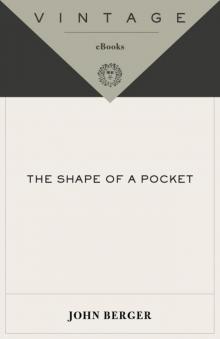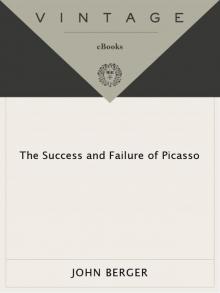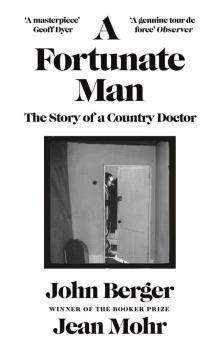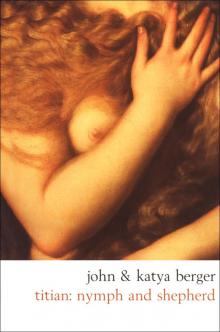- Home
- John Berger
The Success and Failure of Picasso Page 2
The Success and Failure of Picasso Read online
Page 2
He was the master of the unfinished – not of the unfinished oeuvre, but of the experience of the unfinished. If all painting is concerned with a dialogue about presence and absence, Picasso’s art, at its most profound, situates itself on the threshold between the two, at the doorway of coming-into-existence, of the just begun, of the unfinished.
OCTOBER 1987
QUINCY, MIEUSSY
FRANCE
1
PICASSO
is now wealthier and more famous than any other artist who has ever lived. His wealth is incalculable. I will mention only one of his assets. He has a collection of several hundred of his own oil paintings, kept from all periods of his life. This collection – on the basis of current prices – must be worth anything between five and twenty-five million pounds.
Last year one of his gouache paintings (normally worth less than an oil), measuring about two feet by three feet, was re-sold at an auction for £80,000. Admittedly this picture was painted in 1905 during the so-called Blue Period, and this period, because it deals pathetically with the poor, has always been the favourite amongst the rich. However, a small, very average still-life painted in 1936 recently fetched over £10,000. Since Picasso’s collection of his own work includes at least five hundred canvases, many of them much larger and more important than the still-life, this gives us the absolute minimum of five million. The works would, of course, have to be sold tactfully – so as not to flood the market too abruptly.
Just after the Second World War Picasso bought a house in the South of France and paid for it with one still-life. Picasso has now in fact transcended the need for money. Whatever he wishes to own, he can acquire by drawing it. The truth has become a little like the fable of Midas. Whatever Midas touched, turned into gold. Whatever Picasso puts a line round, can become his. But the fable was a comic-tragic one; Midas nearly starved because he couldn’t eat gold.
It was in the early 1950s that Picasso’s earning power and wealth became fabulous to this degree. The decisions which so radically affected his status were taken by men who had nothing to do with Picasso. The American government passed a law which allowed income-tax relief to any citizen giving a work of art to an American museum: the relief was immediate, but the work of art did not have to go to the museum till the owner’s death. The purpose of this measure was to encourage the import of European works of art. (There is still the residue of the magical belief that to own art confirms power.) In England the law was changed – in order to discourage the export of art – so that it became possible to pay death duties with works of art instead of money. Both pieces of legislation increased prices in salerooms throughout the art-loving world.
There was another reason for the rise in prices. By the early 1950s the amount of money available for investment had increased to an unprecedented degree. The reconstruction after the war, the stimulus of rearmament, the consolidation of the developed economies at the expense of the underdeveloped ones, had all led to a situation where there was capital to spare. This in itself would have stimulated art investments, but there was an additional – one might almost say more human – motive involved.
The possibilities of foreign and colonial investment had changed since pre-war days. The sums involved were now too vast for the average private investor to take private decisions: now he simply handed his capital over to a highly-organized investing group. Monopoly capitalism becomes anonymous in character for the average investor no less than for the average employee. Consequently there were investors who were looking – as a sideline – for a field of investment which offered a chance of personal interest and excitement, whilst still remaining comparatively safe. Some of them found art. And so art, at about this time, took in certain lives the place that was once occupied by South American railways, Bolivian tin, or tea plantations in Ceylon.
Within ten years the prices in the art salerooms increased at least tenfold.
Yet even before the 1950s Picasso was rich. Dealers began to buy his work in 1906. By 1909 he employed a maid with apron and cap to wait at table. In 1912, when he painted a picture on a whitewashed wall in Provence, his dealer thought it was worthwhile demolishing the wall and sending the whole painted piece intact to Paris to be remounted by experts on a wooden panel. In 1919 Picasso moved into a large flat in one of the most fashionable quarters of Paris. In 1930 he bought the seventeenth-century Château de Boisgeloup as an alternative residence.
1 Château de Boisgeloup, Normandy
From the age of twenty-eight Picasso was free from money worries. From the age of thirty-eight he was wealthy. From the age of sixty-five he has been a millionaire.
His reputation has increased in step with his wealth. Originally of course it preceded it: it was Picasso’s reputation amongst his friends and fellow painters which first brought him to the attention of the dealers. Today it is his wealth that helps to increase his reputation.
His name is known to those who could not name their own Prime Minister. He is as famous in England as Raphael is in Italy. He is as famous in France as Robespierre. One of his friends, the critic Georges Besson, goes much further. ‘Nothing’, he says, ‘is riskier than trying to define Picasso the man, more famous than Buddha or the Virgin Mary, more mercurial than a crowd.’ This, as so often with Picasso’s friends today, is an exaggeration. But certainly no painter has ever been known to so many people.
The mass media are the technical explanation of this. When once a man has, for some reason or another, been selected, it is they who transform his public from thousands into millions. In the case of Picasso this transformation has also changed the emphasis of his fame. Picasso is not famous as Millet in France or Millais in England were famous eighty years ago. They were famous because two or three of their paintings were made popular and reproductions of these pictures hung in millions of homes. The titles of the paintings – Cherry Ripe or The Angelus – were far better known than the name of the painter. Today, if you take a world view, not more than one out of every hundred who know the name of Picasso would be able to recognize a single picture by him.
The only other artist the extent of whose fame is comparable with Picasso’s is Charlie Chaplin. But Chaplin, like the nineteenth-century painter, became famous because of the popularity of his work. Indeed there are many stories of how his public were disappointed when they saw the real Chaplin because they expected to see Charlie, complete with moustache and walking stick. In Chaplin’s case, the artist – or rather his art – has counted far more than the man. In Picasso’s case the man, the personality, has put his art in the shade. It is too early to explain why this has happened. But it is a point we shall come back to again and again.
You may say that to recognize a name doesn’t amount to recognizing a personality. But everything remembered trails and attracts associations. The associations around Picasso’s name create the legend of the personality. Picasso is an old man who can still get himself young wives. Picasso is a genius. Picasso is mad. Picasso is the greatest living artist. Picasso is a multi-millionaire. Picasso is a communist. Picasso’s work is nonsense: a child could do better. Picasso is tricking us. If Picasso can get away with it all, good luck to him! Such is an average combination of the associations of the name in Europe. The apparent contradictions are possible – even necessary – because daily logic need not and should not apply to mythological characters.
2 Picasso and Françoise Gilot at Golfe Juan, 1948
You suspect I am exaggerating? In the last fifty years under the inhuman pressures within bourgeois society a terrible thirst for unreason has been developed. Jaime Sabartes is Picasso’s life-long companion and semi-official biographer. This is how Sabartes projects Picasso, the man, into the legendary world of the gods:
If Picasso could detain the course of time, all clocks would stop, the hours would perish, days would come to an end, and the earth have to cease its revolutions and wait for him to change his mind. And if it had really been he who had stopped it, the glo
be would wait in vain. Thus I found Picasso, and thus he must continue. It is necessary for the free pursuit of his destiny.1
Surprising as it may at first seem, the expert view of Picasso is, in essence, very similar to the popular view. The experts may admire his art, but, whenever they can, they present Picasso as something other than – or more than – a painter.
The Spanish poet Ramon Gomez de la Serna wrote about his friend in 1932:
In Malaga, his native town, I found an explanation of what Picasso is and I understood to what degree he is a toreador -gypsies are the best toreadors – and how, whatever he may do, it is in reality bullfighting.
Jean Cocteau wrote in the late 1950s:
A procession of objects follows in Picasso’s wake, obeying him as the beasts obeyed Orpheus. That is how I would like to represent him: and every time he captivates a new object he coaxes it to assume a shape which he makes unrecognizable to the eye of habit. Our shape-charmer disguises himself as the king of the rag-pickers, scavenging the streets for anything he may find to serve him.
I, more than most, appreciate the difficulty of writing about painting in words and the need for images and metaphors. But the images which Picasso’s friends use all tend to disparage the mere art of painting. The more one reads them, the more one feels that Picasso’s actual works are incidental. One of his friends – Manolo the Spanish sculptor – said this quite simply: ‘For Picasso, you see, painting is a side-issue.’
This would make better sense if Picasso had many other interests, and divided his energies between painting and other activities. It would even make sense if Picasso was an excessively social man who primarily expressed himself in his relationships with other people. But none of this is the case. He is single-minded; he works like a man possessed; and all his relationships are more or less subservient to the needs of his art.
What then is the explanation? Picasso is fascinated by and devoted to his own creativity. What he creates – the finished product – is almost incidental. To some degree this is of course true of all artists: their interest in a work diminishes when it is finished. But in Picasso’s case it is very much more pronounced. It even affects the way he works. He denies that there is such a thing as progress in the creation of a painting: each change, each step, each metamorphosis – as he calls it – is merely a reflection of a new state in him. For Picasso, what he is is far more important than what he does. He projects this priority on to all art:
It’s not what the artist does that counts, but what he is. Cézanne would never have interested me a bit if he had lived and thought like Jacques-Émile Blanche, even if the apples he had painted had been ten times as beautiful. What forces our interest is Cézanne’s anxiety, that’s Cezanne’s lesson; the torments of Van Gogh – that is the actual drama of the man. The rest is a sham.2
Certainly neither Cézanne nor Van Gogh would have agreed with this. Both, in their different ways, were obsessed by what they produced; both knew that it was by their works and their works alone that their lives might be justified. Cézanne said, ‘The only thing that is really difficult is to prove what one believes. So I am going on with my researches.…’
Picasso’s attitude would, however, have found an echo with the early Romantics – who were indeed the first to formulate it. For them the creative spirit was supreme, and its concrete expressions not just incidental, but a vulgarity.
Heard melodies are sweet, but those unheard
Are sweeter.…
At the beginning of the nineteenth century this was a necessary belief; it was what allowed artists to continue when faced with the way in which the ever more powerful bourgeois world was reducing everything, including art, to a commodity. The creative spirit, genius as a state of being, was celebrated as an end in itself because it alone did not have a price and was unbuyable.
This dualism is now at the very heart of the bourgeois attitude to art. On one hand, the glory and mystery of genius; on the other hand, the work of art as a saleable commodity. You have only to listen to any art dealer today to hear the two in grotesque juxtaposition. The bargaining in guineas, the guarantees of investment, and then the adjectives (‘exciting’, ‘powerful’, ‘extraordinary’, ‘fantastic’) applied to the intangible quality of the work.
It is also implicit in the popular image of the genius – as it is encouraged by untruthful books and films. The genius cannot look after his own material interests (on account of madness, unworldliness, drink), and this inability comes to be seen as a proof of his genius.
One finds the same dualism – the last legacy of this Romantic illusion – in what is now the standardized method of writing art books. The pictures, which the reader can see in the reproductions, are painstakingly described – as though for an inventory. They are treated as stock. Into this description are then inserted the phrases which confer genius on the producer of the pictures. The phrases mount like an incantation. The writer becomes a kind of priest as auctioneer. Here is a typical example:
3 Picasso. An Old Man. 1895
The half-length portrait of an old beggar dating from that time discloses advanced technical skill. There is no doubt that in this as in other related early paintings Picasso was inspired by the great paintings of Velazquez, such as the famous Water Seller of Seville. That is the source of the magnificently realistic rendering of the shining skin, the pasty hair, and the coarse clothing of his model, as well as of the generous, broad brushwork vigorously juxtaposing lights and shadows, which stresses the momentary quality of the figure, and largely contributes to the serious concentrated expression. On the other hand nothing in this picture suggests imitation, let alone copying: like Picasso’s later works, even this youthful painting is characterized by the extraordinary intensity of his own effort. And like all his paintings inspired by historical models, this one reveals a mind that consumes the thing seen in the fire of enthusiasm and recreates it from the ashes as something new that belongs to Picasso alone.…3
What is said is not untrue. It is simply irrelevant. (What might be relevant is why painters paint beggars, what is special about the Spanish attitude to poverty, how the age of a man changes the clothes he wears, whether or not Picasso when he painted this at the age of fourteen was already becoming aware of the inadequacy of the provincial, illustrative style of drawing he had been taught, etc.) There is a total inability to see the work in relation to any general human experience. Instead, the picture is described, identified, and given a good pedigree as an object; whilst Picasso – at the age of fourteen – is set at Velazquez’ right hand and glorified as a phoenix-like genius.
Yet although this Romantic illusion has been preserved in the bourgeois attitude to art, it has not continued to be accepted by artists. For the early Romantics it was a working hypothesis of faith which allowed them to continue working. By the middle of the nineteenth century – and increasingly towards the end – a new and more realistic hypothesis was being put forward. The power of the bourgeoisie would not last for ever. Society was changing or would be changed. The future would therefore be different. From this one could draw the conclusion that the important artist was ahead of his time. Stendhal was among the first to draw this conclusion when he prophesied that his work would start being read in 1880 and appreciated in 1935.
From Stendhal onwards every major artist, however Romantic he may have been in other respects, believed that his works – the only things which could survive in the future – were the justification of his life. He struggled to put all of himself into his work; his creative spirit, in so far as he thought about it, was merely his ability to do this, to transform what he was into what he made. This is as true of Flaubert as of Cézanne or Gauguin or Seurat or Van Gogh or Rodin or Yeats or James Joyce. A few minor artists – like Maeterlinck – played with reviving the romantic illusion about silence being more musical than sound; but it was no longer a means of working: it was a way of graciously accepting defeat at the hands of the world.
The
important artists of Picasso’s generation shared the attitude of their predecessors. Indeed part of their admiration for Van Gogh or Cézanne was due to their sense of having inherited their work, which it was now their duty to continue and develop further. All the emphasis was on what had been and had to be done. As they became highly successful – like Matisse or Braque – they may have needed to believe in their justification by working less urgently. But one has only to read those who, like Juan Gris or Apollinaire, died before such success came, to realize how fundamental to this generation was their conviction that it is what the artist does that counts. A little before he died in 1918, Apollinaire wrote an essay on the new spirit of the poets.
There is the material the poet has collected, the material the new spirit has revealed, and this material will form the basis of a truth the simplicity of which will be undeniable, and which will lead to great, very great things.
The life-line runs through the work.
But not for Picasso. Picasso is the exception. ‘It’s not what the artist does that counts but what he is.’
We have here the first indication of Picasso’s historical ambiguity. He is the most famous painter in the world and his fame rests upon his modernity. He is the undisputed emperor of modern art. And yet in his attitude to art and to his own destiny as an artist there is a bias which is not in the least modern and which belongs more properly to the beginning of the nineteenth century.

 Once in Europa
Once in Europa To the Wedding
To the Wedding The Shape of a Pocket
The Shape of a Pocket Here Is Where We Meet
Here Is Where We Meet The Success and Failure of Picasso
The Success and Failure of Picasso G.
G. Photocopies: Encounters
Photocopies: Encounters A Fortunate Man: The Story of a Country Doctor
A Fortunate Man: The Story of a Country Doctor And Our Faces, My Heart, Brief as Photos
And Our Faces, My Heart, Brief as Photos Titian
Titian A Fortunate Man
A Fortunate Man Photocopies: Encounters (Vintage International)
Photocopies: Encounters (Vintage International) Selected Essays of John Berger
Selected Essays of John Berger